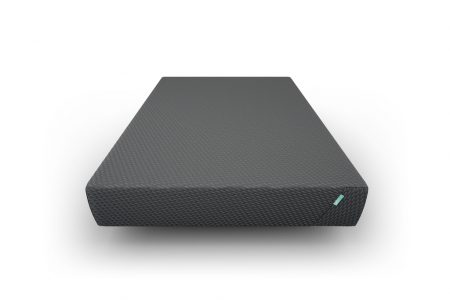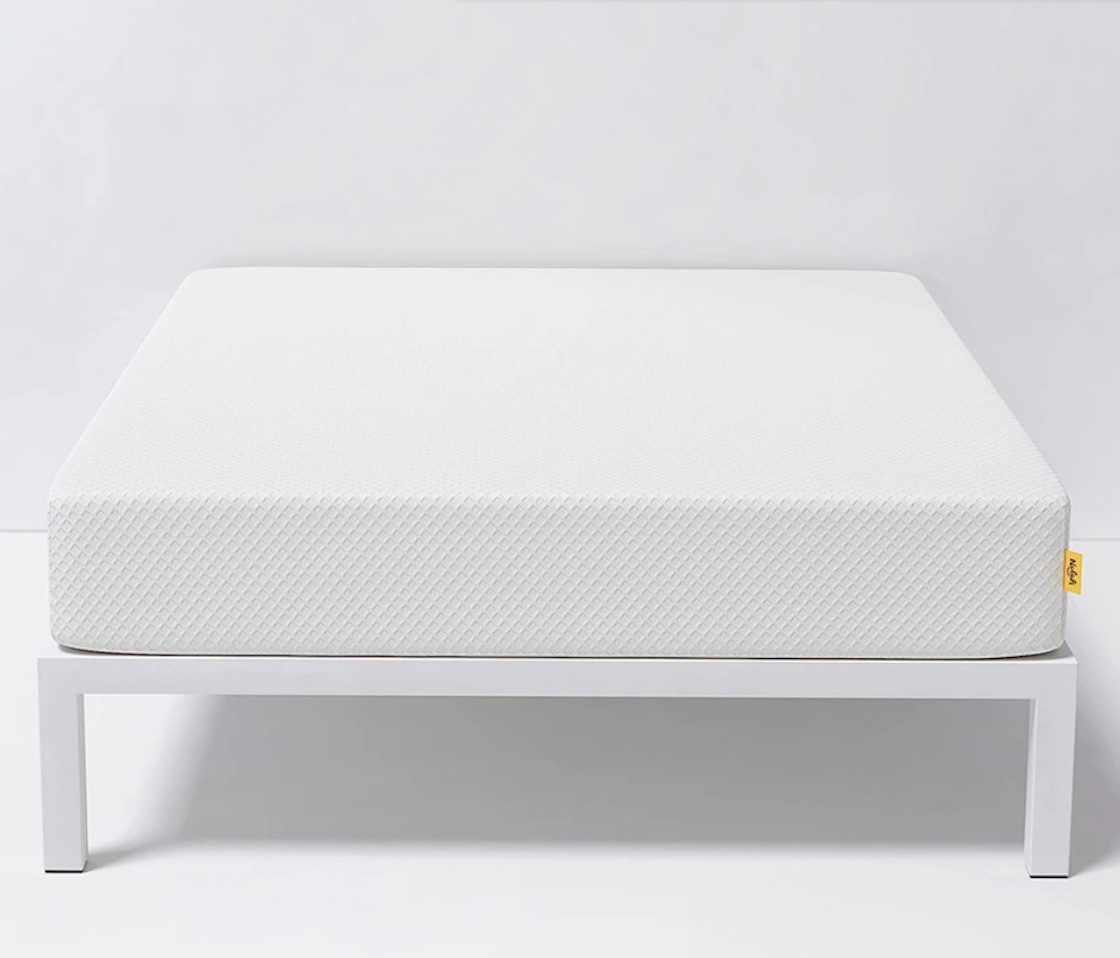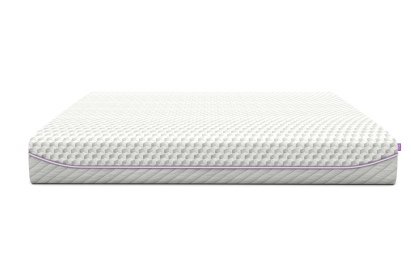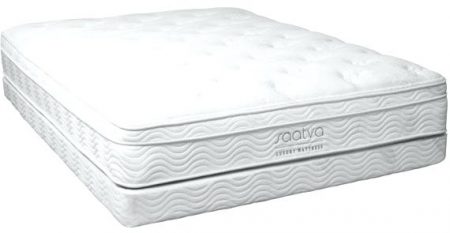As you can see, foam mattresses are unmatched for their levels of conforming and pressure relief. In fact, that’s one of the standout features of this mattress type, and it’s a large reason why many of our top mattress picks for teens are foam mattresses.
Foam mattresses have high-density polyfoam in the support layer, with comfort layers of polyfoam or memory foam. Because they’re made entirely of foam, these mattresses are prized for their superior conforming and pressure point relief. Foam mattresses conform closely to the sleeper’s body, which creates the feeling of sleeping “in” as opposed to “on” the mattress.
As a result, these mattresses have the potential to trap body heat. Although, this can be mitigated to a certain extent if the comfort layers include cooling materials like gel (as the Tuft & Needle Mint, Brooklyn Bedding Bowery, and Purple Mattress all do), or copper (as the Layla Mattress does). Foam mattresses also tend to sleep cooler if they have a firmer firmness rating.
However, not all sleepers find the “hugging” sensation of a memory foam mattress comfortable. For these sleepers, another mattress type may be more comfortable, but still provide a decent amount of conforming, depending on the materials used in their comfort layers.
Best Innerspring Beds for Teenagers
Mattress Reviews
Saatva Mattress Review
Innerspring mattresses use steel coils for their support layer, along with a base polyfoam layer, and foam comfort layers of at least 1 inch or more. Generally, innerspring mattresses are not known for their conforming ability, since they use a uniform coil grid in their support core and have thinner comfort layers. However, several innerspring mattresses stand out from the norm, such as the Saatva, our Best Mattress for Teenage Stomach Sleepers.
Innerspring mattresses like the Saatva feature much thicker-than-average comfort layers. This makes these beds a better choice for sleepers who require some level of conforming, but not so much that they become a heat trap, or in the case of stomach sleepers, allow them to sink too deeply into the mattress.
Hybrid mattresses combine elements of foam and innerspring mattresses in their design. Rather than a uniform coil grid, these beds feature a support core of individually pocketed coils above a base layer of polyfoam, and topped by at least 2 inches of memory foam or latex. Pocketed coils offer more contouring than traditional innerspring grids, while the thicker comfort layers (and use of conforming materials like memory foam) enhance the bed’s overall pressure relieving qualities.
Hybrid mattresses can be a good choice for teens who want a mix of conforming and support. They often sleep cooler than all-foam beds, but not quite as cool as innerspring mattresses. However, hybrid mattresses can be more expensive, so they may not always make financial sense for teenagers who may only use the mattress for a few years.
Latex mattresses use either latex or high-density polyfoam in their support core, with at least one layer of latex in the comfort layers. The overall conforming ability of a latex mattress depends largely on its composition. Latex beds with softer firmness settings and Talalay latex in their comfort layers (a fluffier type of latex) tend to offer more conforming, while those with firmer settings and a higher ratio of Dunlop latex (a denser type of latex) may offer less.
While latex mattresses don’t conform as closely to the body as all-foam beds, they can provide good relief for sleepers with chronic pain, which may be a consideration for parents of teenage athletes.
Latex beds tend to be one of the more durable mattress types, but also one of the most expensive. Since teenagers may leave home within a few years, their long lifespan may have less value for parents.
Airbed use individual chambers of air for support, which sleepers can adjust by using a remote control or hand crank. These beds either feature a thin layer of foam for their comfort layer, or have no comfort layer at all. The ability to customize the firmness level of airbeds makes them attractive to many sleepers, but since they have very thin comfort layers (if any), they provide minimal conforming at best.
Airbeds are also quite expensive. As a result, many parents don’t choose them as a mattress option for their teenagers.
Ultimately, any of these mattress types can be comfortable for your teenage sleeper, as not all teens experience growing pains or require high levels of conforming to relieve them. What’s most important is finding the type of mattress your teenager finds comfortable to sleep on.
Mattress Firmness
Firmness is a relative term that refers to how a mattress feels to those who sleep on it. The following 1-10 scale is used to evaluate firmness in mattresses sold today.
- 1: Softest
- 2: Extra Soft
- 3: Soft
- 4: Medium Soft
- 5: Medium
- 6: Medium Firm
- 7: Firm
- 8: Extra Firm
- 9 to 10: Firmest
Most mattresses manufactured today fall between a ‘3’ and an ‘8’ on this 1-10 scale.
Like mattress height, preferences for firmness are often tied to how much the sleeper weighs. Heavier teens (more than 230 pounds) usually prefer firmer mattresses (‘6’ or higher) because they conform to their bodies and alleviate aches and pains without sink too deeply beneath their weight.
On the other hand, lighter adolescents (less than 130 pounds) often feel most comfortable on less firm mattresses (5 or lower). These models are soft enough to conform to their figures, whereas most of these sleepers do not weigh enough to experience full conforming on firmer mattresses.
Those who fall in the average weight group (130 to 230 pounds) typically choose mattresses that fall between ‘4’ and ‘6’ — a compromise between firmness and softness that accommodates their weight.
Besides body weight, your teen’s preferred sleep position also plays a role in the optimal firmness level for them.
- Side sleepers require the most “give” from their mattress. Softer mattresses allow their hips and shoulders to sink deeper than the rest of their body, maintaining proper spinal alignment.
- Stomach sleepers, conversely, need to avoid sinking too deeply into their mattress, especially in heavier areas of the body like the hips and pelvis. Firmer mattress surfaces are more supportive for these sleepers.
- Back sleepers sleep best on a firmness that lies somewhere in the middle. This way, their hips can sink deeper into the mattress, but not so deeply as to pull their spine out of alignment.
The chart below summarizes the preferred firmness settings for teenage sleepers, based on body weight and sleep position:





